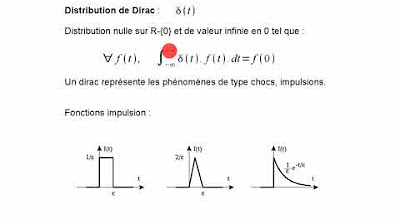MATHEMATICAL SYSTEM || POSTULATES AND THEOREM || GRADE 8 MATHEMATICS Q3
Summary
TLDRThis video tutorial explains the components of a mathematical system, focusing on postulates and theorems. The video highlights key postulates such as the necessity of two points to define a line, and the idea that three non-collinear points define a plane. Theorems are also discussed, like the intersection of two lines forming exactly one point. Examples and figures illustrate these concepts to clarify their applications. By the end of the video, viewers will understand how postulates and theorems interconnect to define fundamental geometric principles, with exercises to reinforce learning.
Takeaways
- 😀 A mathematical system consists of four key components: undefined terms (points, lines, planes), defined terms (such as coplanar points), postulates, and theorems.
- 😀 Postulate 1 states that a line contains at least two points, emphasizing that a single point is not sufficient to define a line.
- 😀 Postulate 2 asserts that a plane contains at least three non-collinear points, ensuring that a plane is defined by points that are not on the same line.
- 😀 Postulate 3 highlights that through any two points, there is exactly one line, which is a fundamental concept in geometry.
- 😀 Postulate 4 explains that through any three non-collinear points, there is exactly one plane, reinforcing the uniqueness of plane formation.
- 😀 Postulate 5 claims that if two points lie in a plane, the line joining them also lies in the same plane, establishing the coplanarity of points and lines.
- 😀 Postulate 6 tells us that if two planes intersect, their intersection is a line, which is a key geometric property of planes.
- 😀 Theorem 1 states that if two lines intersect, they intersect at exactly one point, ensuring the uniqueness of intersection points between lines.
- 😀 Theorem 2 states that if a point lies outside a line, exactly one plane contains both the point and the line, defining how points and lines relate to planes.
- 😀 Theorem 3 asserts that if two lines intersect, there is exactly one plane that contains both lines, reinforcing the concept of planes containing intersecting lines.
Q & A
What is the key focus of this video tutorial?
-The video focuses on the second part of understanding mathematical systems, specifically on postulates and theorems, and how these components are related to each other.
What are the four main parts of a mathematical system discussed in the video?
-The four main parts of a mathematical system discussed are undefined terms, defined terms, postulates, and theorems.
What is Postulate 1 and what does it explain?
-Postulate 1 states that a line contains at least two points. This means that to form a line, you need at least two distinct points.
What does Postulate 2 say about planes?
-Postulate 2 states that a plane contains at least three non-collinear points. This means that to define a plane, you need three points that are not all in the same straight line.
What is the significance of Postulate 3?
-Postulate 3 states that through any two points, there is exactly one line. This ensures that a unique line can be formed between any two points.
How does Postulate 4 relate to planes?
-Postulate 4 states that through any three non-collinear points, there is exactly one plane. This guarantees the existence of a unique plane when three points are given, provided they are not collinear.
What does Postulate 5 say about lines and planes?
-Postulate 5 states that if two points lie in a plane, then the line joining them also lies in that plane. This means that a line formed by two points within a plane remains entirely within that plane.
What is the main concept of Postulate 6?
-Postulate 6 states that if two planes intersect, their intersection is a line. This implies that when two planes meet, they form a line of intersection.
What is Theorem 1 and its significance?
-Theorem 1 states that if two lines intersect, they intersect at exactly one point. This is important for understanding how lines interact in geometry.
How does Theorem 2 relate to points and lines?
-Theorem 2 asserts that if a point lies outside a line, then exactly one plane contains both the line and the point. This shows that a point outside a line is always associated with exactly one plane containing both the point and the line.
What does Theorem 3 state about intersecting lines?
-Theorem 3 states that if two lines intersect, exactly one plane contains both lines. This confirms that intersecting lines are coplanar and lie in the same plane.
Outlines

This section is available to paid users only. Please upgrade to access this part.
Upgrade NowMindmap

This section is available to paid users only. Please upgrade to access this part.
Upgrade NowKeywords

This section is available to paid users only. Please upgrade to access this part.
Upgrade NowHighlights

This section is available to paid users only. Please upgrade to access this part.
Upgrade NowTranscripts

This section is available to paid users only. Please upgrade to access this part.
Upgrade NowBrowse More Related Video
5.0 / 5 (0 votes)





